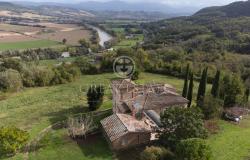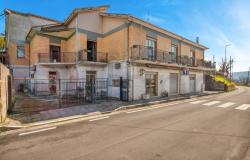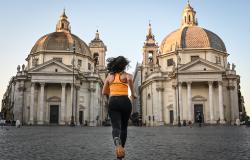A major retrospective devoted to the work of one of the world's foremost painters, Cy Twombly, has arrived in Rome following critically acclaimed runs in London's Tate and the Guggenheim in Bilbao.
The show at the National Gallery of Modern Art offers an overview of the different phases in the life and work of Twombly, who married an Italian aristocrat, Tatiana Franchetti, and has lived in Rome on and off since 1957.
Entitled Cycles and Seasons in its English edition, the exhibition features around 100 works of art, moving backwards through the 60-year career of the US artist, best known among the public for the scratchy scrawled words that adorn many of his pieces.
Each section of the show is devoted to a different period in his work, starting with his eight-painting series from 2005, inspired by Homer's Iliad and entitled Bacchus, Psilax and Mainomenos.
Completed in the Lazio coastal town of Gaeta during the Iraq War, the series is heavily marked with liquid red paint, which critics have likened to blood and wine.
The two huge versions of Twombly's renowned Quattro Stagioni or Four Seasons, completed in the 1990s when he was in his sixties, is the next section.
These follow the well-established artistic tradition of using each season to represent a different stage in life, from the vitality of spring through to the encroaching death of winter.
Three untitled works inspired by 18th century art are on show in the next section. Completed in 1985, these are on public display for the first time.
Another famed Twombly group is his Treatise On The Veil, two pieces expressing the artist's change of direction in the last 1960s.
The first version is made up of six interlinking panels exploring the rectangular form while the second is a single long painting.
The stark simplicity of these pieces is in sharp contrast to the violent, heavy eroticism of his early 1960s works, such as Murder of Passion and Crimes of Passion II, dotted with his characteristic doodle-like sketches of genitalia.
Also from this period is The Italians, replete with visceral scribbles and signs, which was produced in his studio near Rome's central Campo de' Fiori market.
School of Athens reflects Raphael's frescoes in the Vatican, a tribute to great artists of the past.
The exhibition concludes with one of Twombly's earliest works, MIN-OE, a symmetrical composition based on tribal art and ancient Iranian metalwork. This was completed in 1951, while Twombly was still a student at Black Mountain College in North Carolina.
The exhibition runs at Rome's National Gallery of Modern Art until May 24.










